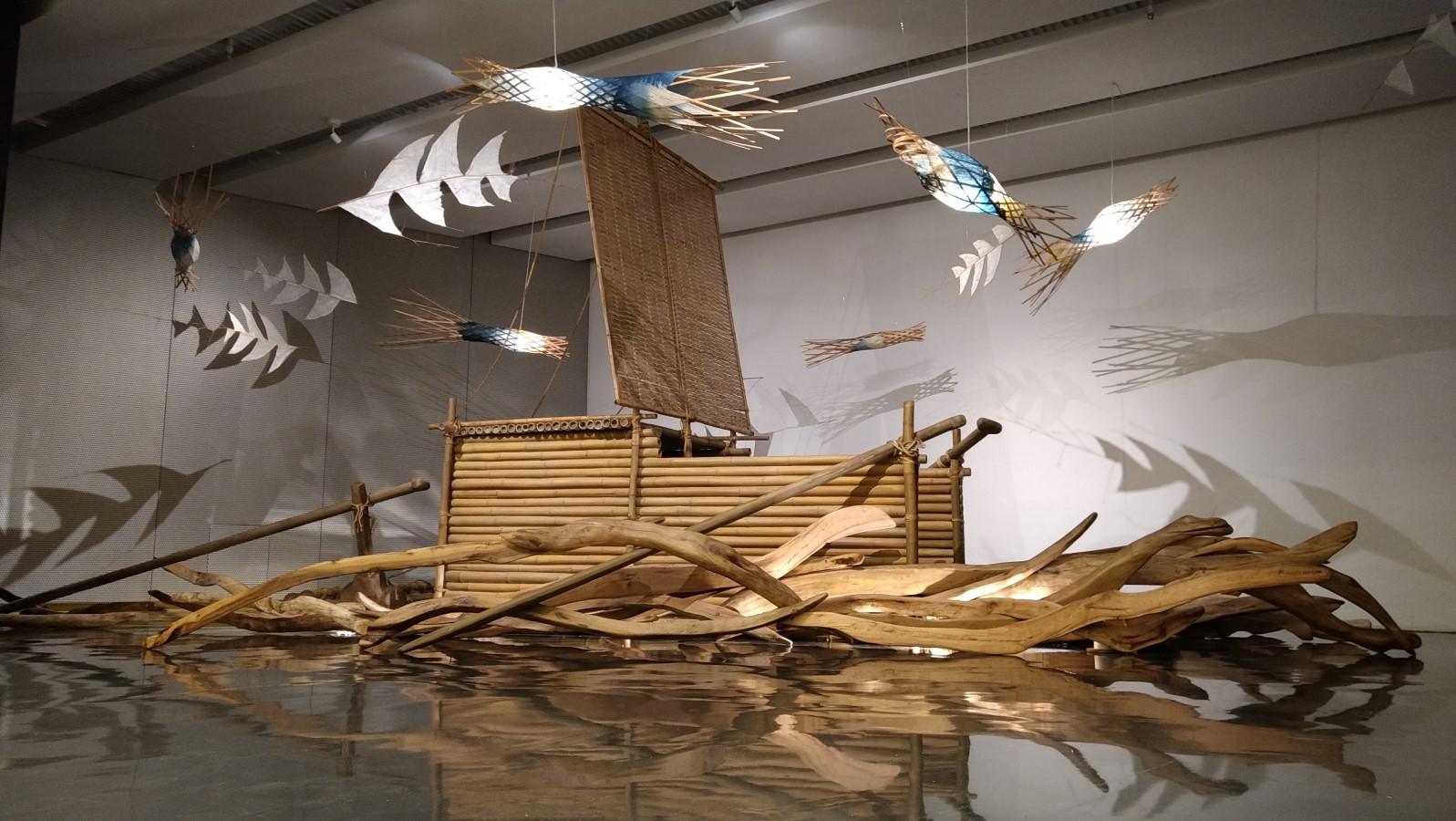Installation Art

The Call of the Ocean
The design and production concepts bamboo raft originate from HYORYU TAIWAN CHOPURANTOHNOKI compiled by Mitsuru Nishikawa. It is the story about how Japanese 文助 drifted to eastern Taiwan (present-day estuary of the Xiugulan River) in 1803 after a shipwreck and settled down there with the Amis. The Amis bamboo raft in the book was drew by a painter according to 文助’s description after his return to Japan. According to the book, the bamboo raft is about 7 feet long, with bamboo surrounding the left, right, and rear sides. The sail is woven with bamboo, and a board is designed at the stern for cooking. The bamboo has space for two to three persons for fisheries. To create the effect of education and arts together, artworks Moonlight Migration and Drift.Wave create atmosphere across time-space with natural materials in contrast with the bamboo raft. Through the interaction and projection of light and shadow against the artworks, a sense of flowing is created for the bamboo raft and time-space, calling out the ocean flowing and flapping inside the body of early STSP settlers.
Integrated project design: Chun-Yong Lin, Chun Yong Studio
Moonlight Migration
Artist: Shu-Yen Chen, Tuwak Tuyaw
Time: 2015-2016
Outline:
Life in the eastern coast is often a matter of beauty and brutality, which flow and storm between one another between the mountain and ocean, and the currents and wind directions. Facing the immense Pacific Ocean nourished by salt, the resilient and flowing power of life thrives. Each of them is gliding and roving, independently and freely in its own style, but roaming back and forth along an inherit tempo on Earth and an ancient rhythm in nature toward the moonlight rising from the east. It is a woven rattan and bamboo container inspired by (with the archetype from) the fish trap (sanku) that the Kavalans from eastern coast use to catch fish and shrimps. After integrating with the ancient also modern composite materials including paper mulberry bark fabric and grass color, a flying ark or migratory fish illuminating from within is created. The dialog between the free contour of bamboo sheets and the lightweight bark fulfills the flying imagination formed by the bamboo branch tips and handmade paper.
Drift.Wave
Artist: Wen-Yuan Huang
Material: Driftwood
Time: 2020
Outline:
In Taiwan, typhoons and torrential rain often wash withered wood from the mountain to the sea across the rivers. Wood that stuck by the shore is known as driftwood. The Amis bamboo raft has disappeared in history. Today, it was reconstructed at the Museum of Archaeology based on the oral history of a Japanese person. It is like driftwood that drifts back ashore, reincarnating in front of us. However, a boat can’t move without water. Therefore, waves that can carry it offshore were made also with driftwood, wishing that Taiwan’s archaeology history can sail the seven seas.
